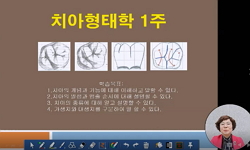Background: Aflatoxin B1 (AFB1) is a toxic metabolite generated by Aspergillus species and is commonly detected during the processing and storage of food; it is considered a group I carcinogen. The hepatotoxic effects, diseases, and mechanisms induced...
http://chineseinput.net/에서 pinyin(병음)방식으로 중국어를 변환할 수 있습니다.
변환된 중국어를 복사하여 사용하시면 됩니다.
- 中文 을 입력하시려면 zhongwen을 입력하시고 space를누르시면됩니다.
- 北京 을 입력하시려면 beijing을 입력하시고 space를 누르시면 됩니다.
https://www.riss.kr/link?id=A109118032
- 저자
- 발행기관
- 학술지명
- 권호사항
-
발행연도
2024
-
작성언어
English
- 주제어
-
등재정보
KCI등재
-
자료형태
학술저널
-
수록면
105-113(9쪽)
- DOI식별코드
- 제공처
-
0
상세조회 -
0
다운로드
부가정보
다국어 초록 (Multilingual Abstract)
Background: Aflatoxin B1 (AFB1) is a toxic metabolite generated by Aspergillus species and is commonly detected during the processing and storage of food; it is considered a group I carcinogen. The hepatotoxic effects, diseases, and mechanisms induced by AFB1 owing to chronic or acute exposure are well documented; however, there is a lack of research on its effects on the intestine, which is a crucial organ in the digestive process. Dogs are often susceptible to chronic AFB1 exposure owing to lack of variation in their diet, unlike humans, thereby rendering them prone to its effects. Therefore, we investigated the effects of AFB1 on canine small intestinal epithelial primary cells (CSIc).
Methods: We treated CSIc with various concentrations of AFB1 (0, 1.25, 2.5, 5, 10, 20, 40, and 80 μM) for 24 h and analyzed cell viability and transepithelial-transendothelial electrical resistance (TEER) value. Additionally, we analyzed the mRNA expression of tight junction-related genes (OCLN, CLDN3, TJP1, and MUC2), antioxidant-related genes (CAT and GPX1), and apoptosis-related genes (BCL2, Bax, and TP53).
Results: We found a significant decrease in CSIc viability and TEER values after treatment with AFB1 at concentrations of 20 μM or higher. Quantitative polymerase chain reaction analysis indiCATed a downregulation of OCLN, CLDN3, and TJP1 in CSIc treated with 20 μM or higher concentrations of AFB1. Additionally, AFB1 treatment downregulated CAT, GPX1, and BCL2.
Conclusions: Acute exposure of CSIc to AFB1 induces toxicity, and exposure to AFB1 above a certain threshold compromises the barrier integrity of CSIc.
동일학술지(권/호) 다른 논문
-
- 사단법인 한국동물생명공학회
- 신지현
- 2024
- KCI등재
-
Evaluation of the optimal thawing conditions for dog spermatozoa frozen in cryovials
- 사단법인 한국동물생명공학회
- Ibrahim Saddah
- 2024
- KCI등재
-
- 사단법인 한국동물생명공학회
- 이상윤
- 2024
- KCI등재
-
- 사단법인 한국동물생명공학회
- 오재돈
- 2024
- KCI등재





 eArticle
eArticle






